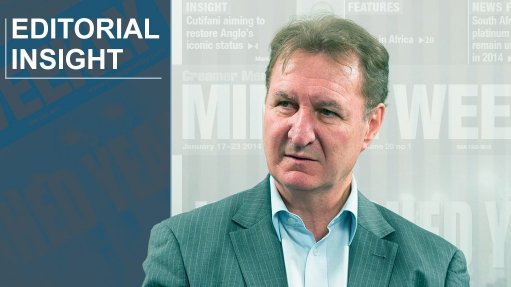
South Africa’s excellent sun intensity and its prime onshore wind corridors put the country in an excellent position to pursue the electrification of almost anything, says the newly published book entitled South Africa’s Energy Transition: A Roadmap to a Decarbonised, Low-Cost and Job-Rich Future.
Besides being clean, renewable energy’s business case is strengthening by the day as investors shy away from conventional energy generation that comes with climate risk.
Diversified mining company Anglo American has been looking closely at how the sun and the hydrogen it can produce can lower costs and boost output at its operations.
Like most energy flow, not all of what is generated can be consumed and Anglo has been earmarking excess photovoltaic energy to power its trucks.
As part of its smart energy mix aimed at achieving carbon neutrality and an entirely changed footprint, technical director Tony O’Neill is hoping to have a truck driving on hydrogen in the next 12 months.
By doing this, it expects to get 5% to 10% more out of its truck fleet as part of the clear trend to electrify mining.
“I can see the day coming when our installed diesel fleet gets replaced. I think the world is missing a trick with hydrogen,” he said during the company’s yearly sustainability presentation.
As is stated in the book South Africa’s Energy Transition, in regions such as South Africa, where resources are especially abundant, solar, wind and hydropower, when combined, can fall below $0.03/kWh and supply high-load-factor electricity demand profiles. Such low electricity prices, the book adds, may allow hydrogen to be produced at costs competitive with natural gas reforming, oil-cracking or coal gasification.
South Africa needs an integrated growth and employment plan that consciously seeks to increase the competitiveness of South Africa’s economy in the world economy. At the centre of such a plan should be the recognition that South Africa enjoys world-class solar and wind energy potential – as well as the world’s biggest source of platinum-group metals that can catalyse hydrogen into electricity.
As has been pointed out, there are important factors that give South Africa a long-term advantage as it moves through the energy transition. These include cheap and clean being low risk and lower cost not only in stationary applications but also in transport, heating, and the creation of clean power fuel by the likes of Sasol, which must clean up its carbon-dioxide-heavy act.
Policymakers from across various ‘silos’, such as the trade policy, industrial policy, energy policy and environmental and climate policy areas, must put their heads together to bring in a mineral and energy complex rooted in renewable energy.
It is now possible to put South Africa firmly on a path of using low-cost solar and wind energy to restore the international competitiveness of the South African economy. Low-cost electricity would foster a range of spin-offs, including hydrogen production, carbon-neutral fuels and cost-competitive fertiliser and chemicals production – all of which could be made for the local and export markets.